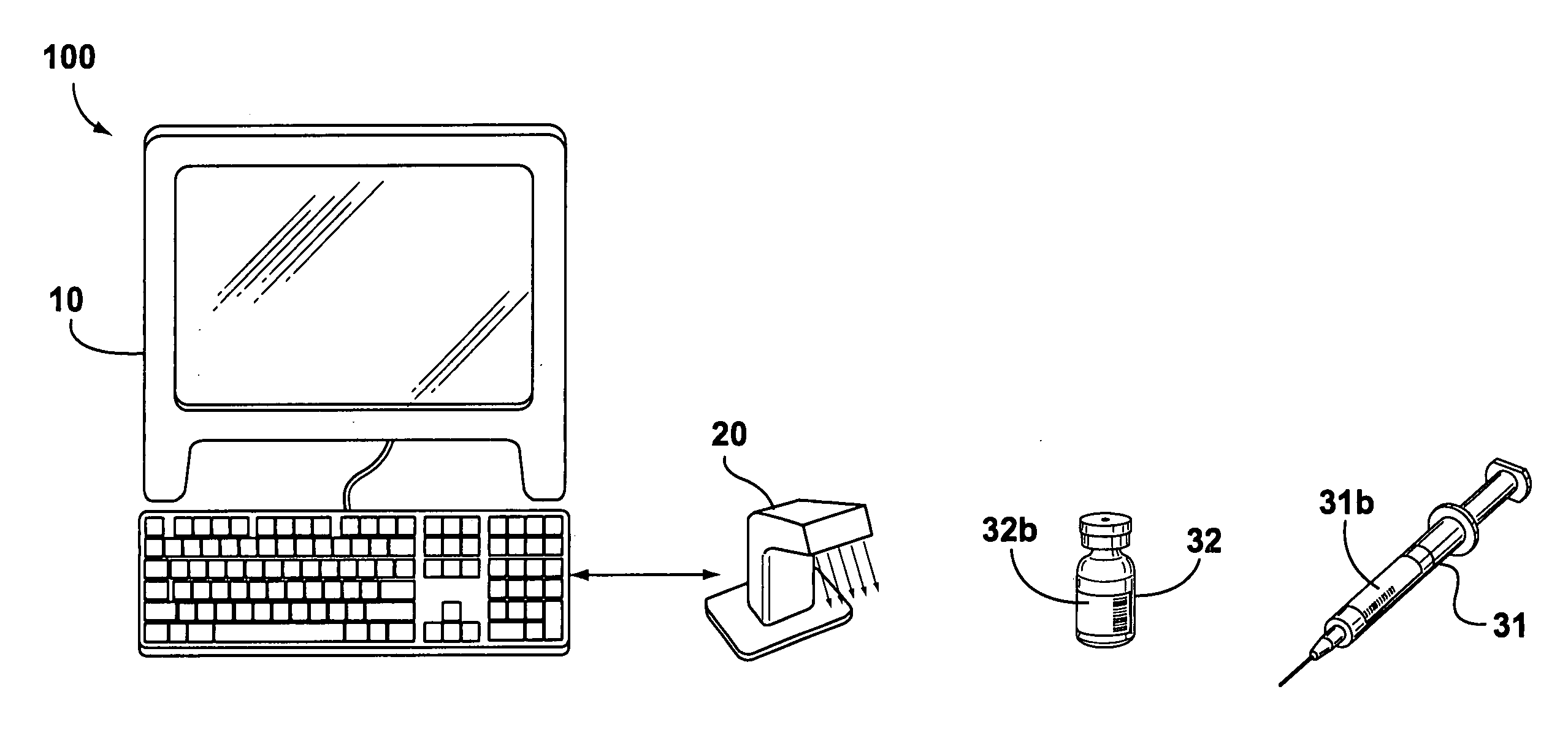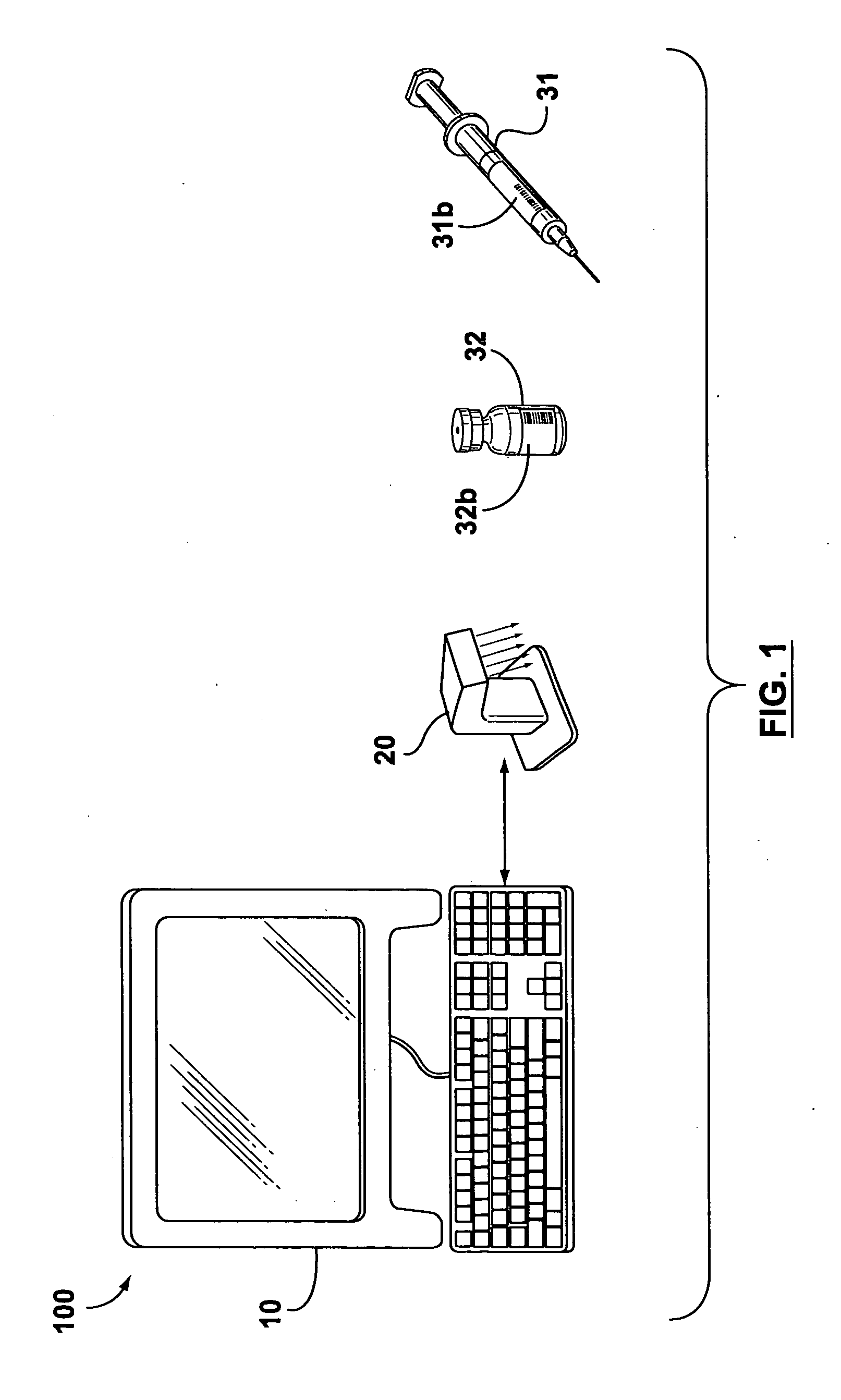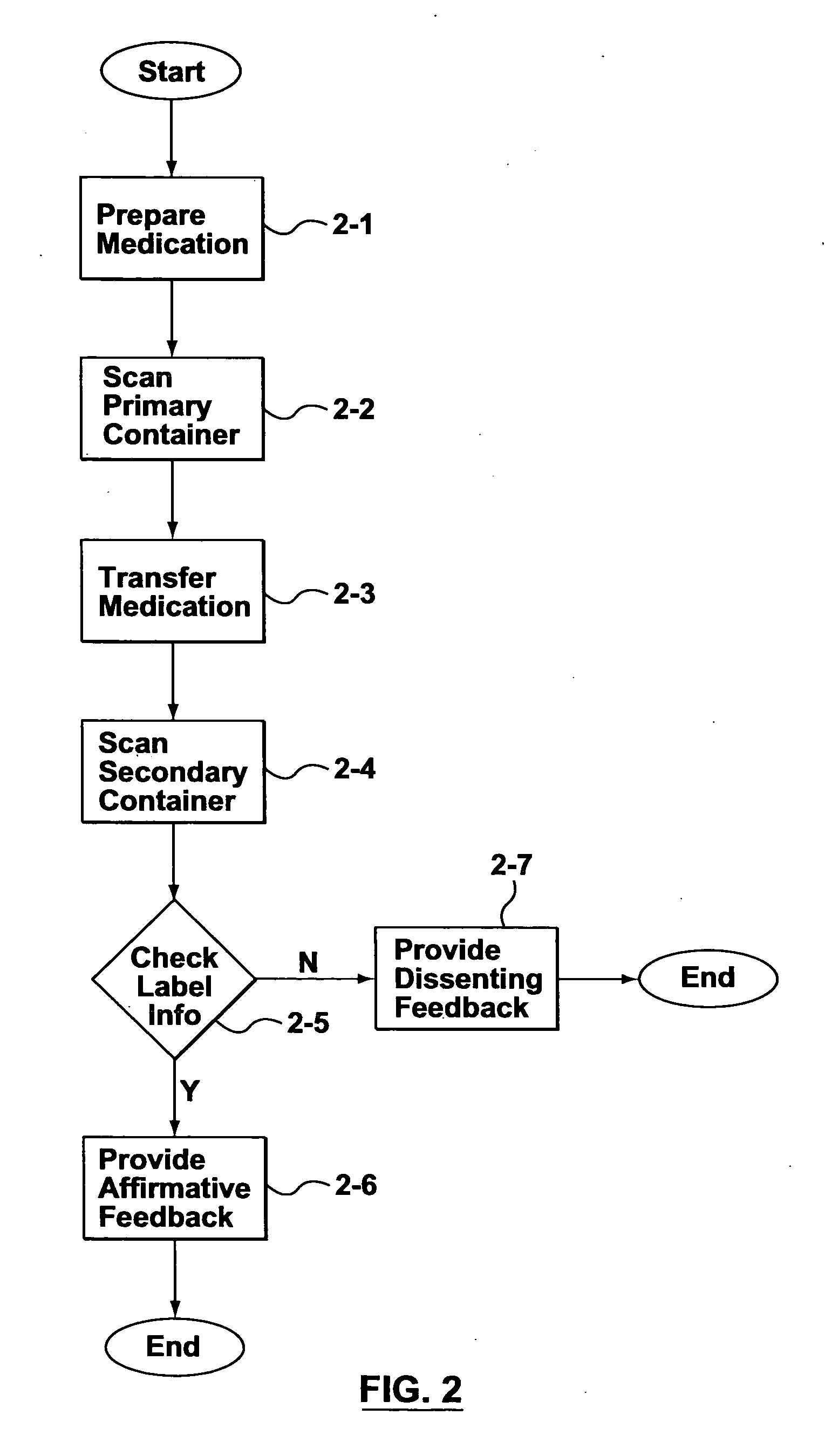Medication verification systems and methods
a verification system and medication technology, applied in the field of medical informatics, can solve the problems of not being standardized in practice, not being able to simply identify the contents of a secondary container (e.g. a syringe) without some type of visual aid, and being difficult to apply labels to users
- Summary
- Abstract
- Description
- Claims
- Application Information
AI Technical Summary
Benefits of technology
Problems solved by technology
Method used
Image
Examples
Embodiment Construction
[0023] Changing the operating procedures within a health-care facility may inadvertently introduce new sources of liability. Subsequently, health-care professionals are naturally very cautious and risk averse when contemplating the adoption of new operating procedures and electronic systems that involve significant changes to their accepted procedures. However, human errors during the distribution of medications to patients results in a number of accidents that can be attributed to not having a systematic method for verifying the contents of secondary containers used for storing and administering medications.
[0024] Some embodiments of the invention provide electronically-aided systems and methods for validating the contents of a secondary container after a medication has been transferred from a primary container to the secondary container and before the medication is administered to a patient. In accordance with some aspects of the invention, labels for secondary containers are pro...
PUM
 Login to View More
Login to View More Abstract
Description
Claims
Application Information
 Login to View More
Login to View More - R&D
- Intellectual Property
- Life Sciences
- Materials
- Tech Scout
- Unparalleled Data Quality
- Higher Quality Content
- 60% Fewer Hallucinations
Browse by: Latest US Patents, China's latest patents, Technical Efficacy Thesaurus, Application Domain, Technology Topic, Popular Technical Reports.
© 2025 PatSnap. All rights reserved.Legal|Privacy policy|Modern Slavery Act Transparency Statement|Sitemap|About US| Contact US: help@patsnap.com



